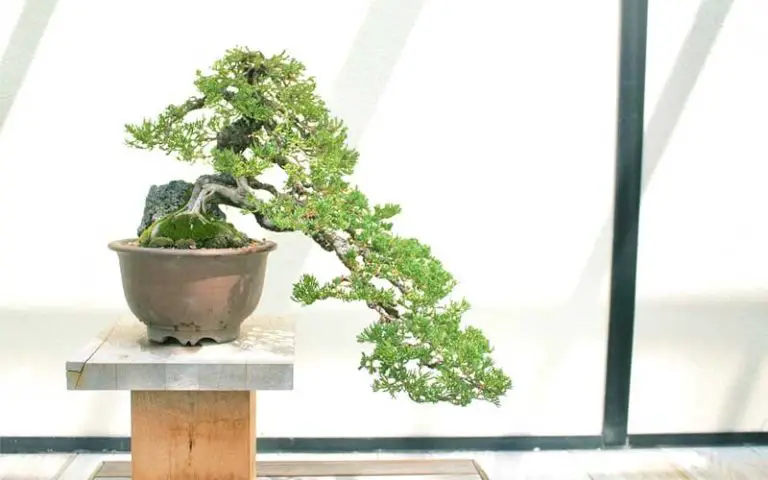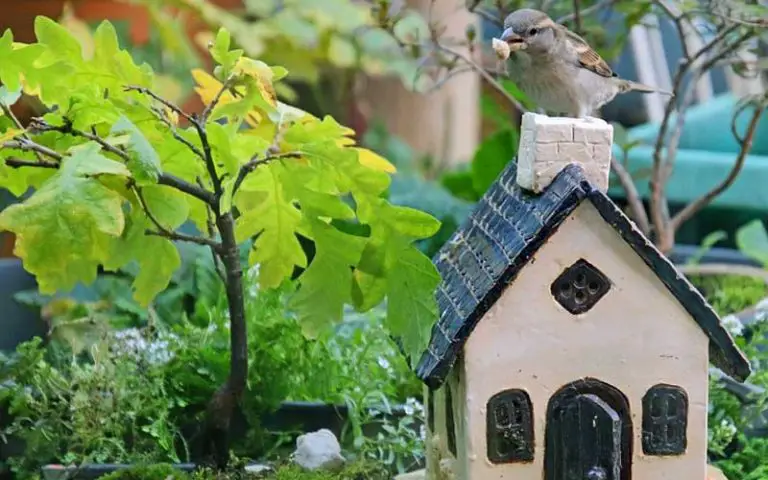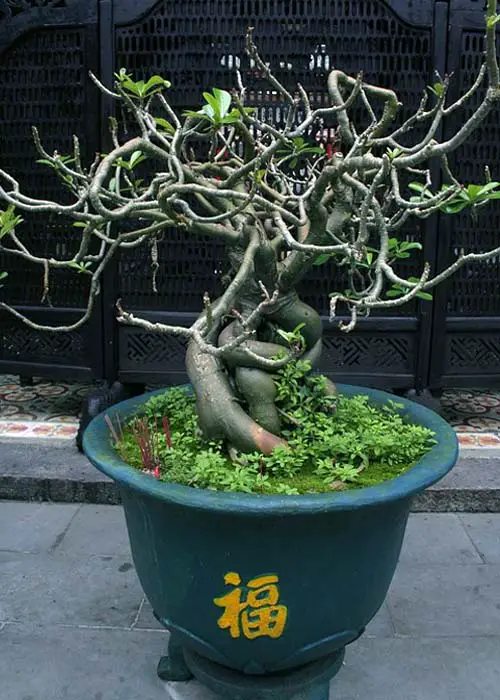Most Popular Bonsai in the United States

Japan might have started the bonsai culture after seeing the Chinese penjing art, but the United States popularized it in the west. There are very few states where you won’t find some form of bonsai, whether in local parks, stores, or homes. Of course, it helps that several Hollywood movies love to include them in their shows.
We’re going to present the following aspects to you:
We’re going to present the following aspects to you:
The Bonsai Culture in the United States
As you may well know, the Japanese started the bonsai culture in the 1100s when students on a trip to China witnessed penjing. When they returned with a few specimens to their home country, the new bonsai spread like wildfire. Somehow, the legacy built from there that the Japanese started this art form.
In the 1930s and 1940s, during the struggles of WWII, US soldiers held posts in Japan. It was then that some of them took note of the bonsais around homes and schools. Troops that returned sometimes brought some home as souvenirs, bringing the culture to the west.
Small clubs started to form around this time to encourage each other and learn, but it wasn’t until 1967 when the official American Bonsai Association formed. It created standard guidelines and policies, while a few Japanese experts joined in to teach them further. It between 1950 and 1968 that bonsais saw a massive surge in the United States.
Today, there are many Americans who either own bonsais are would love to learn how to grow them. There’s no lacking in clubs, associations, and institutes, while even Amazon has several trees listed on its sites. Hollywood has also presented this sacred form, with the famous showing of the garden juniper in 1984 with the Karate Kid movie.

Most Popular Bonsai In the United States
While there are many local trees that could be grown as bonsais, Americans tend to aim for the exotic. We’ll take a look at the more popular ones you’ll find in online stores and homes, while we’ll also touch on some rare ones. You can also look at the care sheets for more information.
Juniper
Since the juniper thrives in many hardiness zones and grows well from cuttings, you’ll find many bonsai stores selling them. Mostly native to Asian countries like Japan and China, they are one of the most loves trees to cultivate. The needles give off a unique scent when you cut them, while you can pinch them off with your fingers.
There are numerous species that are used for bonsai. Most notably among them are the garden and Chinese junipers. These two are usually confused with one another, but as in fact different trees. You’ll also find different colors, such as green and blue-green.
Pine
Americans love the pine bonsai for how easy it is to train and wire. It has a hardy wood that you can bend while it’s still young, but you’ll need to take extra care with older branches. The conifer needles are unique among its class, while you’ll enjoy seeing the baby cones when your tree is ready to produce seeds.
There are there species that are popular in the United States as bonsais. These are the Japanese Black Pine, Mountain Pine, Scots Pine, and Japanese White Pine. Each species has a different color in the needles, varying between dark green and blue-green.
Japanese Maple
One prized hardwood bonsai tree is the Japanese Maple. While it looks stunning in the spring and summer, it’s in autumn when it shows the marvelous red leaves. However, there are some sub-species that retain red leaves even in summer.
The shape of the leaves is also a popular symbol in America. When you prune them correctly, you can cultivate hundreds of tiny blades that make the bonsai look spectacular. The only downside is that it required lots of attention daily, so make sure you have enough spare time to devote to it.
Japanese Flowering Cherry
The Prunus serrulata might not sound familiar to beginners, but expert bonsai growers love having these in their homes. The flowers are either white or pink, depending on which variant you have. You can develop them in many styles, as long as you show off that foliage.
One of the main reasons Americans enjoy this species is that the wood is pliable and easy to wire and bend. It’s also durable and hardy, taking damage without dying or suffering. In addition, it’s incredibly ornamental, so make sure you place it in a location where you can display it clearly.
Spruce
This tree genus grows well in many northern hemisphere countries worldwide. While many species have a home in the United States, Americans enjoy developing international ones. One example is the Norway Spruce in Sweden that has found its way into US homes for its beautiful foliage.
The spruce has many significant roles in the US besides as a bonsai. Some examples include timber for construction, pulpwood, food, medicine, tonewood, and resin. Some households use them as Christmas trees instead of the traditional cypress, while the cones are gorgeous as decorations around the home.
Indigenous Trees Grown as Bonsais
The above section covered trees that can be found worldwide, but some species are indigenous bonsai in the United States that are also popular. Let’s have a look at a few of them now.
Cedar
Cedrus is a conifer genus from the pine family that spreads throughout the US. There are at least thirteen states where they flourish, including Texas, Arizona, Utah, and Michigan. It’s well known for cracked barks, broad branches, and massive cones.
The Atlas Cedar is one of the most popular to grow as a bonsai due to the bluish sheen of the leaves. Many of these trees are regarded as ornamental, and you may see them lining long avenues in US cities. Top styles include informal and formal upright, cascading, and slanting.
American Bald Cypress
A tree from the cypress family, it’s primarily found in southern United States cities. However, they are incredibly adaptable when it comes to soil, light, and humidity. The green leaves turn a rust color in the autumn, which is one of its primary attractions.
Other common names include swamp, white, and tidewater red cypress. You’ll find these trees in massive forests close to rivers and other water sources, which is why grouping them together as bonsais is appealing. It can also live for hundreds of years if looked after correctly.
Pitch Pine
This specific pine is native to several regions in North America. It stretches from Maine to Georgia before heading west towards Kentucky. Where other trees might find the soil and conditions too acidic or poor to grow in, the Pitch Pine thrives.
One interesting aspect is that it can form as a hybrid with other pines in the same class. For example, it develops nicely with loblolly, shortleaf, and pond pines. Where the latter is concerned, some botanists believe it’s a sub-species of the Pitch Pine. It makes a stunning bonsai with rich green leaves.
American Hornbeam
If you’re looking for an authentic American tree, hunt no further than the Hornbeam. It’s only found in North America, reaching from Minnesota to Maine and up north into Canada. The tree has stunning green leaves and a strong, thick trunk.
You won’t find many places that sell the Hornbeam as a bonsai. However, it’s a rare commodity, so you’ll really have something unique if you manage to get one to grow. You’ll need to keep it in the shade, as it doesn’t enjoy full shade too much. Caterpillars are also fond its leaves.
American Snowbell
Also known as Mock-Orange, this tree loves to grow in the south-eastern United States and is also fond of Ohio. It loves the swamp areas, although people have reported sightings in Florida and Texas. If you’re living in a wet climate, the Snowbell is sure to thrive in your home, thanks to the high humidity.
While the tree grows in abundance in the US, it’s another species that’s rare to have as a bonsai. Still, some seek it out to form part of a unique collection, even from overseas. It has small flowers that complement the green leaves that give it a beautiful appearance.

The National Tree of the United States
If you have a stunning white or red wooden floor in your home, the chances are that it’s from an oak tree. In 2004, Congress approved oak as the national tree of the United States from a list of 22. The reason provided was that it stood for the same aspects as the country: diversity, strength, and beauty.
The oak has an excellent presence in Pennsylvania, but there are many states where various species are available. However, the survival of seeds is slim in the wild, with only one out of 10,000 ever growing into a tree. The primary reason is due to animals loving the acorns as nourishment.
You can, of course, propagate oaks from acorns in your home through stratification and germination. Unfortunately, it takes several years for them to mature, which is why many enthusiasts buy them as adults. Of course, you’ll need to provide as much sunlight and water as possible.
There are two main subgenera, namely, the red and white oaks. The latter has smooth margins while the latter has toothed. However, both have robust root systems, so you may need to transplant every two years to provide some maintenance.
National Bonsai and Penjing Museum
In Washington, the National Mall holds over 3,000 cherry blossom trees that bloom whenever spring arrives. The story goes as far back as 1912, when Tokyo’s mayor gifted them to the American state. This act wouldn’t be the last gift from the bonsai nation as the two countries sought to form a stronger bond of peace.
Japan presented the United States with 53 bonsais in 1976, which joined the penjing trees China had provided in 1972. It resulted in the formation of the National Bonsai and Penjing Museum, situated at the National Arboretum. Bonsai enthusiasts in the US usually visit this stunning display to study them and find inspiration.

United States Bonsai Associations and Clubs
Enthusiasts aren’t shy to start bonsai clubs in each state, while there are also official institutions. We’re looking at some of the top ones, while you can find many more online. We’ll also take a quick look at any influences they may have had on the culture.
American Bonsai Association
The ABS is the official bonsai association of the United States, formed in 1967. It has a charter, a Board of Directors, annual events, seminars, courses, and much more. You can register as a member or register your club on its database so that your team is aware of any meetings taking place.
Regional US Bonsai Clubs
Some states have an official regional bonsai association or club that reports to the ABA. Each one has goals and missions, while they strive to expand the bonsai culture as much as possible. Here are the list of names and how many clubs are registered with them in that region:
- Bonsai Clubs of Florida: 28 clubs
- The Golden State Bonsai Federation, California: 65 clubs
- Louisiana Association of Bonsai Societies: 6 clubs
- Lone Star Bonsai Federation, Texas: 10 clubs
- Mid-America Bonsai Alliance: 32 clubs in various states
- MidAtlantic Bonsai Societies: 11 clubs in various states
- Pacific Northwest Bonsai Clubs Association: 19 clubs in multiple states and Canada
- Potomac Bonsai Association: 12 clubs in four states
Borealis Bonsai Club
This club is situated in the North Pole city of Alaska, revered as the home of Santa Clause, with Christmas decorations adorning it at the end of the year. It specializes in developing and selling bonsais while teaching how to take care of them. There are six official meetings in the year.
Bay Island Bonsai
The club was formed in 1998 from a desire to improve bonsai education and standards in Alameda, California. Enthusiasts in the region register as members, hosting events throughout the year to spread a love for the culture. Even people from the nearby cities come to visit the exhibitions to get a taste of bonsai flare.
Final Thoughts
The United States is one of the most prominent promoters of bonsais in the west. Rivaled mainly by Canada and South America, it has several clubs and societies that strive to spread the culture across all the states.
If you look at the small trees sold on online distributors like Amazon, you’ll notice that most sellers are American. There are also plenty of US online stores that help to propagate several bonsais in each hardiness zone. It’s pretty clear how much passion the country has.







